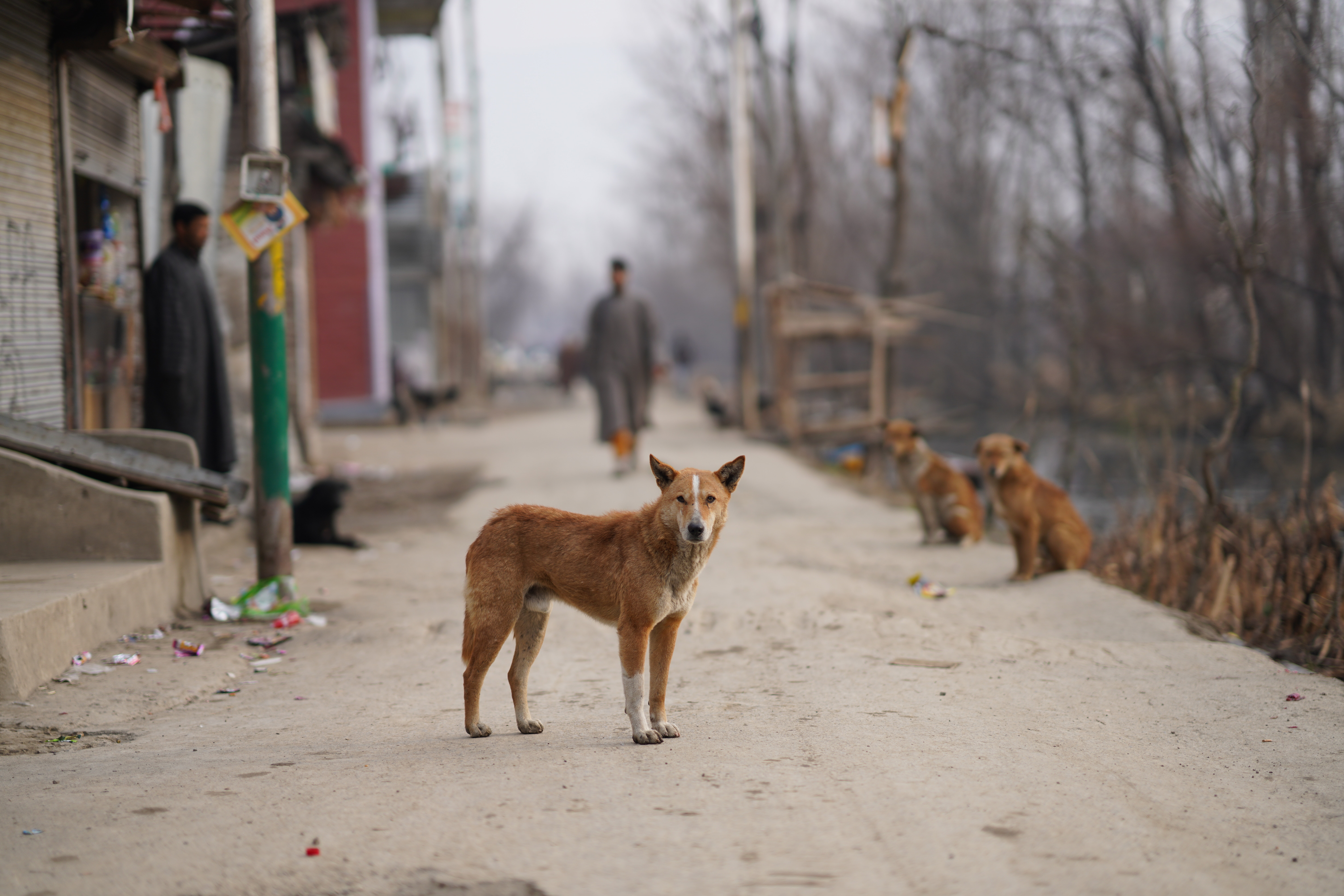


Say anything about stray dogs, and there are some typical responses: Some say they are okay if you don’t bother them; others find them a nuisance and a danger to society; still others are completely oblivious; and finally, there is the group that loves them, feeds them, and takes care of them.
The Indian Street dog, often called the Pariah or the Indie, can be traced back 4,500 years. Skeletons of Indies have been found in the excavated ruins of Mohenjo-Daro, a civilization that flourished between 2600 and 1600 BCE. There is no question that our dogs have been around about as long as we have. So, why have they proliferated to the point that not a street in India is free of them? It’s quite simple. A female dog litters twice a year and gives birth to six to twelve pups on average. About six survive each litter. The dog reproduces for twelve years at that rate, resulting in one hundred and forty-four puppies in one female’s lifetime, says Nisha Verma, a dog feeder in Pune for the past seventeen years and for an equal number of years in whichever city her Naval officer husband was posted in. Nisha is a physical therapist and personal trainer, but her willingness to work with street animals is not just because of the compassion and kindness she feels towards them. It is because she wants to keep them from multiplying at that rate and being further mistreated and misunderstood.
Both Nisha Verma and Charu Dev, another dog feeder in the Noida area, believe that the only way to solve the overpopulation of stray dogs is to feed them. These feral animals will only ever trust those who feed them—not sporadically but regularly and consistently. Only once they trust can they be caught and spayed or neutered. Over the past many years, Nisha has had 150 dogs spayed and neutered, spending Rs. 10,000 on each one. These are the dogs she feeds and cares for, making sure their vaccinations are up to date, that they have a dry place to stay during monsoons, and that they never have to forage in garbage or attack unprovoked.
Charu says that once she started feeding the dogs, she learned their temperaments and their medical histories. Just like humans, each dog is different, with its own sense of fear and anxiety, mostly caused by trauma experienced during its life of living on the road. She says that dogs, once they feel a sense of belonging, will keep new dogs away from that area, and once they are neutered and well fed, they will be calm and stay away from confrontation.
People who find stray dogs a nuisance and a menace to society have collectively found their own methods to eliminate these creatures. The first is literally eliminating them. Other methods include filing court cases against dog feeders and others who work to help the animals, insisting on feeding points for dogs, and sending all dogs to municipal shelters.
They have accused dogs of heinous crimes, punishing not just one dog but the entire population in the vicinity—for something no one witnessed and no one who knows Indies believes could have happened. None of these methods has had any significant impact or kept the dog feeders from doing their job, come rain or COVID.
Humans have been adopting dogs as pets for as long as dogs have existed. Humans have also been devising different ways to train these pet dogs over the years. As humans have evolved into living in dense communities with few open spaces, the need to train pet dogs has also become essential, and ways and methods have evolved as people have spent more time understanding the animals. Priti Chauhan, a dog trainer in Pune who specialises in behaviour and aggression in dogs, says that people must integrate dogs into their lives and themselves into the dog’s. Many new owners are surprised when they realise that dogs must be trained. She advises that dogs begin training as soon as they come home—at 45 days as opposed to after vaccinations at five to six months, as many vets recommend. Puppies stop learning at five months, so the best learning window is lost if training is delayed.
Are people born cat people, dog people, or neither? Charu says that true dog lovers are born that way. Some people will say they love dogs, but they love their pets and don’t much care for stray animals. Others feed dogs and try to be caring because their pandit has told them to feed a black dog every Saturday; they won’t feed the brown dog sitting next to the black one or worry about feeding the black one every other day. She says that children should be taught to co-exist with stray dogs, not instilled with a fear of getting bitten.
In addition to stray dogs and pets, there is a third group that’s rapidly gaining popularity. People are adopting adult stray dogs and bringing them into their homes, either as companions to another dog or as their only dog—a foray into dog ownership. These dogs are sometimes picked up from shelters, but usually they are off the street, where they catch someone’s eye or play with a pet being walked on a leash. These dogs are taken home, vaccinated, fed well, and looked after. The owners, in an effort to give the dogs a home and a taste of freedom, let them off leash and allowed them to roam the streets that used to be their home. These dogs are no longer content with their territory. They now have the confidence of a pet but the survival instinct of a stray, and they often get lost or attack an innocent bystander or another dog, their two worlds colliding in a way that humans may not understand.
Priya Hajela is the author of Ladies’ Tailor, published by Harper Collins India.